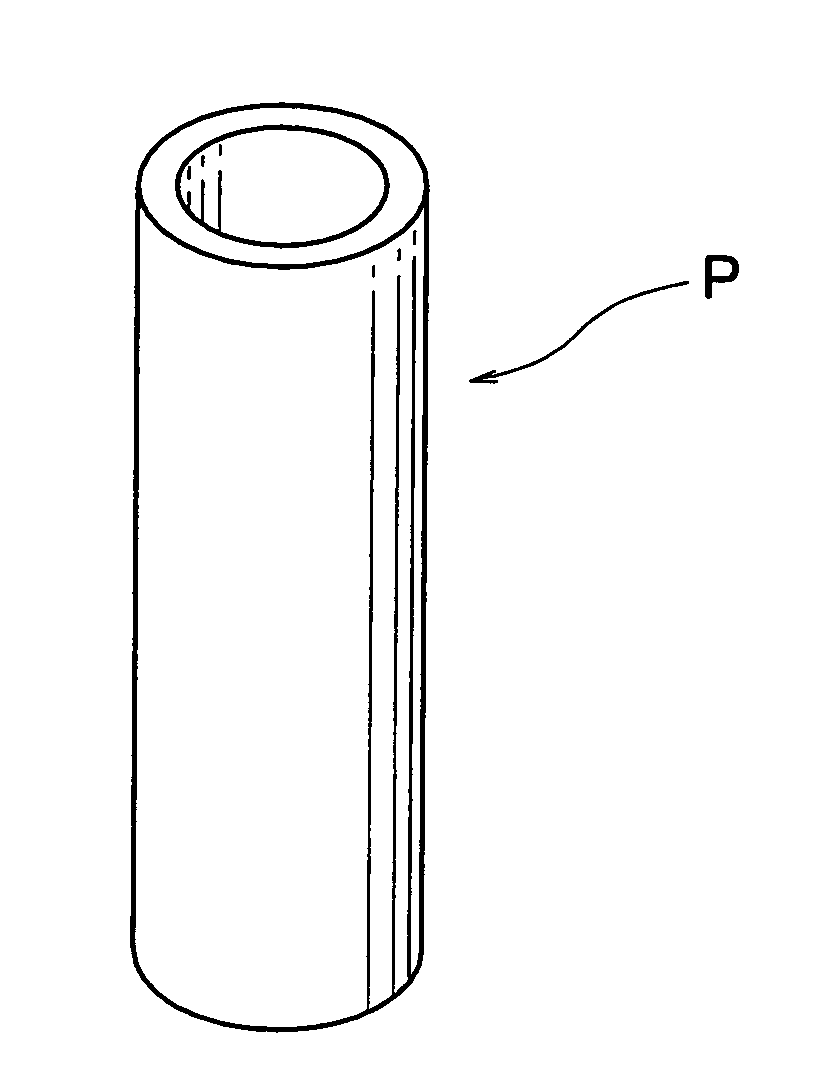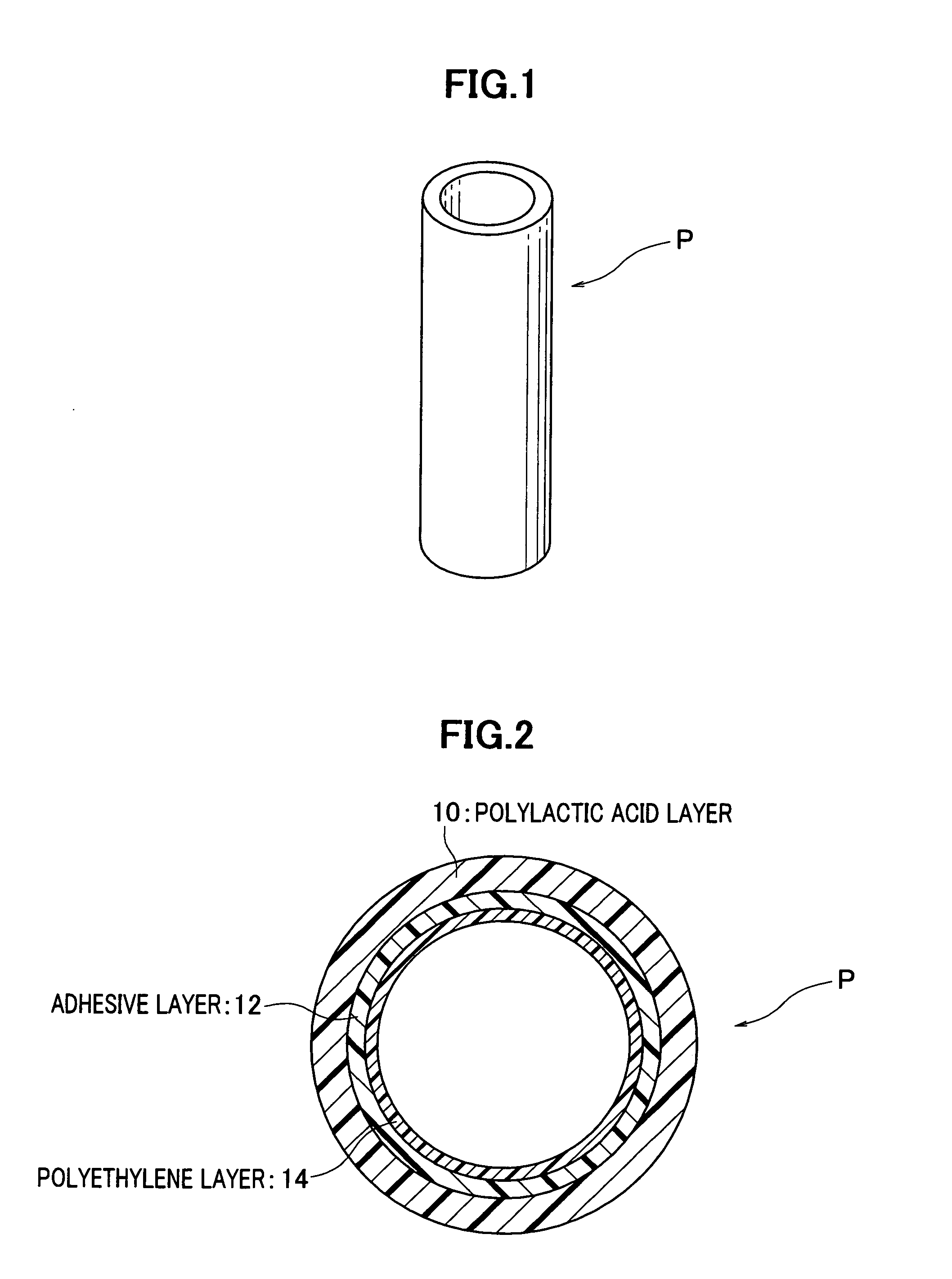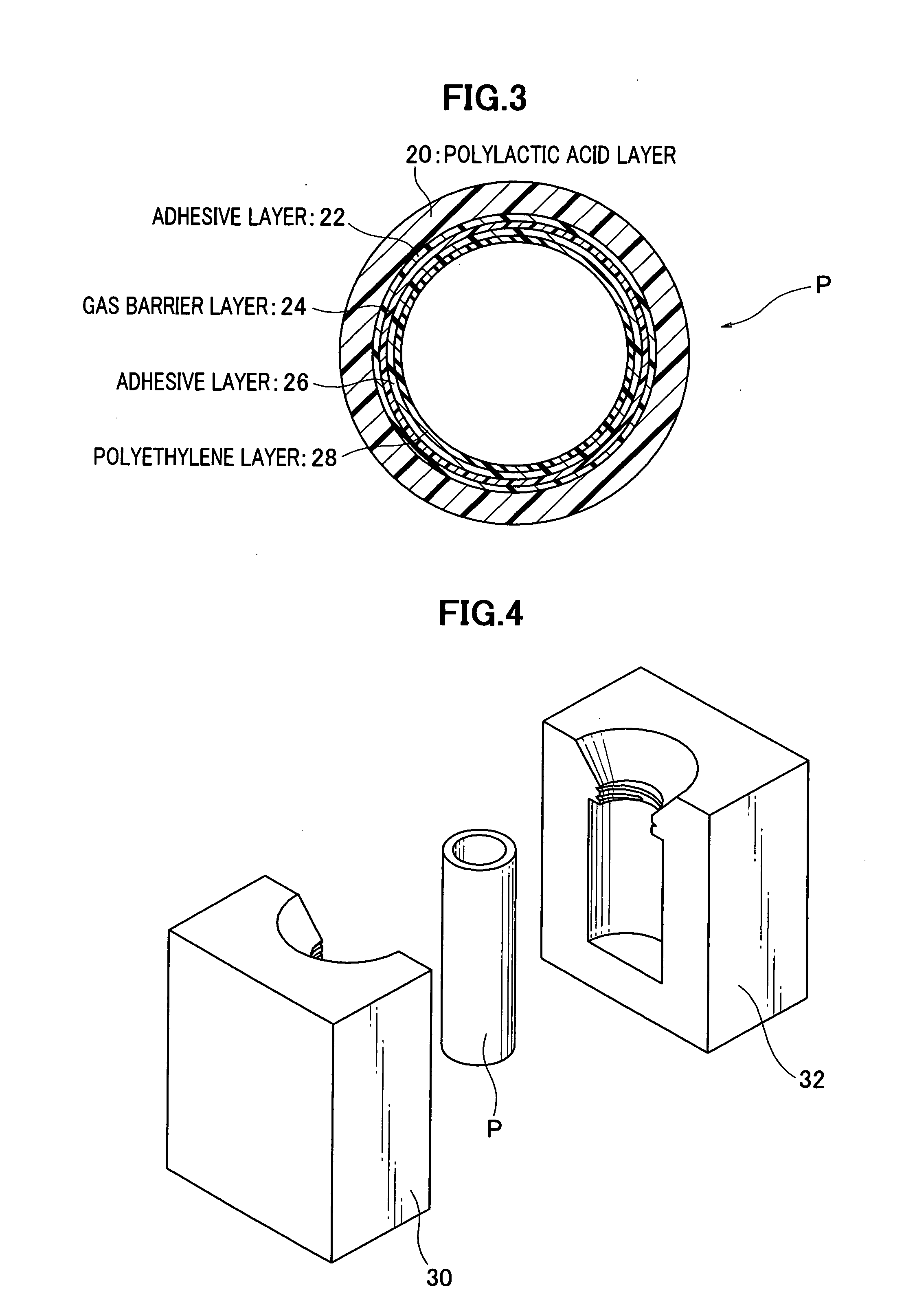Molded body of laminated plastic derived from biomass, and manufacturing method therefore
a technology of laminated plastic and biomass, which is applied in the direction of transportation and packaging, other domestic articles, synthetic resin layered products, etc., can solve the problems of adverse effects on marine animals, contaminating the natural environment, and serious environmental problems, and achieve the effect of enhancing the high-impact property
- Summary
- Abstract
- Description
- Claims
- Application Information
AI Technical Summary
Benefits of technology
Problems solved by technology
Method used
Image
Examples
Embodiment Construction
[0043]Preferred embodiments of a biomass-derived plastic laminated molding and a method of manufacturing the same according to the present invention will now be described in conjunction with the accompanying drawings.
[0044]In the manufacturing method of a biomass-derived plastic laminated molding, first of all, a parison P, namely, preliminarily molded blank is prepared. As shown in FIG. 1, the parison P is shaped in pipe by extrusion-molding. The parison P has its lower end closed and its upper end left open. The first form of the parison P has a cross-section, as shown in FIG. 2, in which a three-layer configuration is comprised of an outer layer or polylactic acid layer 10, an intermediate layer or adhesive layer 12, and an inner layer or polyethylene layer 14. The adhesive layer 12 is of adhesive resin such as denatured polyolefin, vinyl acetate, or the like. The parison P has its pipe-shaped portion as thin as 2 mm, for example.
[0045]The second form of the parison P has a cross...
PUM
| Property | Measurement | Unit |
|---|---|---|
| temperature | aaaaa | aaaaa |
| glass-transition point | aaaaa | aaaaa |
| glass-transition point | aaaaa | aaaaa |
Abstract
Description
Claims
Application Information
 Login to View More
Login to View More - R&D
- Intellectual Property
- Life Sciences
- Materials
- Tech Scout
- Unparalleled Data Quality
- Higher Quality Content
- 60% Fewer Hallucinations
Browse by: Latest US Patents, China's latest patents, Technical Efficacy Thesaurus, Application Domain, Technology Topic, Popular Technical Reports.
© 2025 PatSnap. All rights reserved.Legal|Privacy policy|Modern Slavery Act Transparency Statement|Sitemap|About US| Contact US: help@patsnap.com



